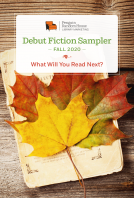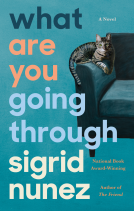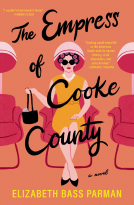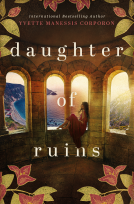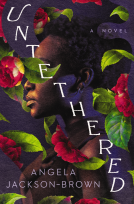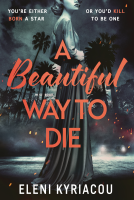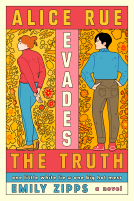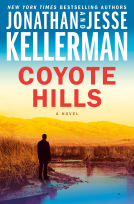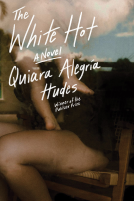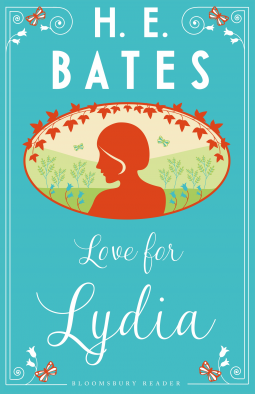
Love for Lydia
by H. E. Bates
This title was previously available on NetGalley and is now archived.
Send NetGalley books directly to your Kindle or Kindle app
1
To read on a Kindle or Kindle app, please add kindle@netgalley.com as an approved email address to receive files in your Amazon account. Click here for step-by-step instructions.
2
Also find your Kindle email address within your Amazon account, and enter it here.
Pub Date May 12 2016 | Archive Date May 12 2016
Bloomsbury USA | Bloomsbury Reader
Description
Lydia – shy, sheltered, beautiful and just 19 – glides into Evensford one wintry day, stirring up feeling amongst the town’s young men. But it is the young Mr Richardson that she befriends. As winter turns to drowsy summer, his world becomes a wondrous place, full only of Lydia; but a change comes over the once retiring girl as she discovers the effect she has on other men. As his closest friends fall under her spell, the love Richardson feels for Lydia becomes tangled with jealousy and resentment, a rift that may never be repaired.
First published in 1952, Love for Lydia is a poignant look at love through the eyes of a boy growing up. Set amidst the hazy beauty of the English countryside and the crumbling splendor of the British upper classes, Bates demonstrates his ability to capture the complexities of human character, his remarkable talent for contrasting romance against stark reality, and the innocence, joy and sadness of young love.
H. E. Bates was born in 1905 in the shoe-making town of Rushden, Northamptonshire. After leaving school, he worked as a reporter and as a clerk in a leather warehouse. His first novel was published by Jonathan Cape when he was just twenty. Many critically acclaimed novels and collections of short stories followed. His most popular creation was the Larkin family which featured in five novels beginning with The Darling Buds of May in 1958. The later television adaptation was a huge success. Many other stories were adapted for the screen, the most renowned being The Purple Plain (1947) starring Gregory Peck, and The Triple Echo (1970) with Glenda Jackson and Oliver Reed. H. E. Bates married in 1931, had four children, and lived most of his life in a converted granary near Charing in Kent. He was awarded the CBE in 1973, shortly before his death in 1974.
Available Editions
| EDITION | Ebook |
| ISBN | 9781448216444 |
| PRICE | £4.99 (GBP) |
Average rating from 17 members
Featured Reviews
 kATHLEEN G, Reviewer
kATHLEEN G, Reviewer
Beautifully written classic. It's nice to see a novel like this reissued. The story remains timeless. Lydia is engaging, the descriptions of the countryside are lovely, and the plot has enough zing to keep you reading. Try this one if you enjoy British novels set between the wars. THanks to Netgalley for the ARC.
 Anna T, Reviewer
Anna T, Reviewer
Love for Lydia was first published in 1952 and it is still an extremely poignant novel. This is by far one of the greatest love stories of the twentieth century. It is a beautifully written, classic love story. The prose is exquisite and the descriptions of the outdoors and countryside scenery are a delight. I’m very glad a gave this novel a chance. A timeless, steamy love story that I highly recommend.
 Mandi R, Reviewer
Mandi R, Reviewer
I'm still not sure how I felt about this book. I'm glad I read it. I like books that make me think and feel strongly.
Pros.. Very well written. The characters were well developed and the scenery described so well that it was easy to picture.
Cons.. Went very slowly for me. I didn't have any love for Lydia as a character and felt so sorry for all the people in the story who were unfortunate enough to. The new cover made me think it would be a happy book and I found it utterly depressing. Real and depressing which life can be sometimes I guess.
I'm glad I read it but not sure I would suggest it to friends.
 Aimee B, Reviewer
Aimee B, Reviewer
I really enjoyed this book. It was beautifully written with detailed descriptions of the people and the places of Evensford. The best part of the book for me was the main character, Richardson. I love when a character is fully developed and we see the good and the bad, and we find both in Richardson as he deals with his love for Lydia.
The book gives a great look into the lives of young people trying to find their way in the world, dealing with first loves and loves lost. It shows these characters growing up and maturing into people capable of real love and understanding. I loved it and would highly recommend it.
 Pat M, Reviewer
Pat M, Reviewer
5★
A glorious, slowly evolving story told by a young man about his dull, drab industrial village of leather tanneries and the changes to his life when he meets Lydia Aspen. Richardson (the only name we know him by) and Lydia are both nineteen, innocent children by today’s teen-aged standards. Apparently orphaned, she has been brought to live with her two elderly aunts, the aristocratic Aspen sisters, and their unsavoury brother, in their imposing house surrounded by expanses of land and avenues of trees.
Richardson, a reluctant newspaper reporter, is summonsed to the house by the aunts and asked to provide some companionship for their young charge. They want her to meet people and not be isolated and stuffy as they are. Lydia is lovely but awkward, and the two young people come to know each other, bonding over ice skating, dancing and walks. She’s a flirt and a tease, delighting in her growing power over him but fretting that it won’t last.
The narrator is a sensitive, nature-loving fellow who seems out of his depth with this budding femme fatale. Someone has said this is reminiscent of The Great Gatsby, and I can see why. There's pain and tragedy amidst the partying.
The first half of the book is about their growing attachment to each other, but as they begin to socialise more with others, we meet a number of interesting characters, some of whom are rivals for Lydia’s attention. And the large, blonde, blue-eyed Holland family, is worth waiting for. Sixteen people sat down to Sunday dinner, including the newest generation.
“. . . already a generation of fair, chaste-looking Holland was springing up, all alike, all clean and fresh as sheaves in a wheat field. You were never expected to hold conversations at Busketts; meals had the pleasant discordance of a disorganized and hungry choir. Brown arms passed and exchanged and repassed across the table buttery masses of scones and bread and currant loaf, plates of ham and watercress and pork-pie and in winter toasted crumpets and apples baked and stuffed to a sugary glitter with walnuts and figs. Tarts of lemon curd and Mrs Holland’s speciality, cheese-curd, a tart of greenish melting softness with fat brown plums in it, were wolfed down by mouths that seemed to be laughing whenever they were not eating.”
The writing is exquisite. If I have a complaint, it’s only that in this dry, grey, drab place there are also so many flowers, cultivated and wild, that Richardson feels the need to tell us about every blossom he spies.
They walked in the garden after tea past “long stone pergolas of dripping rambler rose, hot crimson above urns of pale blue agapanthus lilies on paths of sun-baked stone. . . opulence and amplitude and calm loveliness spread with lushness everywhere about long lawns broken by cedar-shade pools of intense blackness.”
And that pretty much describes Lydia as well. A contrast of colour and lushness and dark shadows. The characters are wonderfully real, and the weather is almost another character itself.
Through the seasons, we are moved from bitter cold where a chapel has “frozen steps like a waterfall of chipped glass” to extreme heat. “There was no rain and by August the tips of the elms on the high clay-land were scorched yellow, then brown and dry. Corn began to catch fire by railway tracks. . . in bean-fields you could hear the splintering crack of exploding pods, burnt black by heat. . . “
H.E. Bates is well known still for Darling Buds Of May and the series that followed, and I have long loved the Larkin family. This is not so light-hearted, and there are some dark times ahead for Richardson and his friends.
I am so pleased this has been reissued or I might never have discovered it. Thanks to NetGalley and Bloomsbury for a copy for review.
 Meg C, Bookseller
Meg C, Bookseller
I really enjoyed this love story. Some of the writing reminds me of Fitzgerald, more floral than sparkling, but it gave me the same sort of reaction. I will certainly be looking for more of Bates' books to read if they're anything like this one.
Readers who liked this book also liked:
Yvette Manessis Corporon
General Fiction (Adult), Historical Fiction, Women's Fiction
Marie Bostwick
Historical Fiction, Literary Fiction, Women's Fiction
